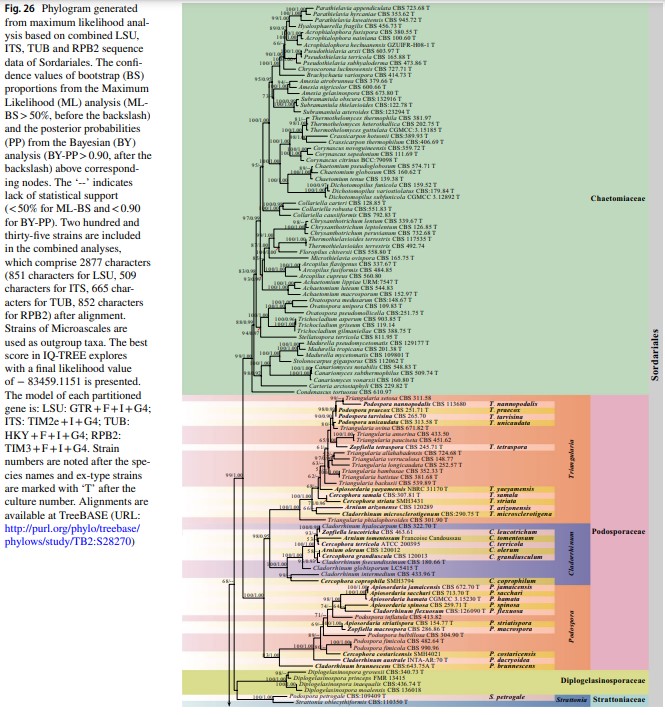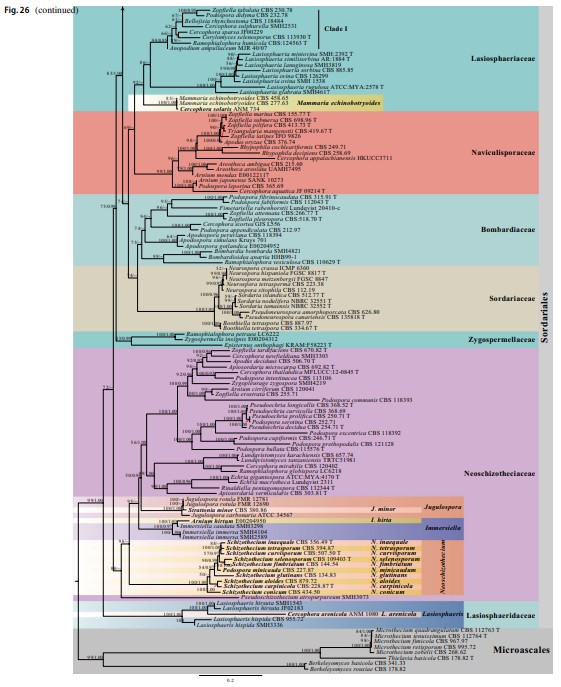Triangularia bambusae (J.F.H. Beyma) Boedijn, Annls mycol. 32(3/4): 302 (1934)
Basionym: Trigonia bambusae J.F.H. Beyma, Centbl. Bakt. ParasitKde, Abt. II 89: 236 (1933)
MycoBank number: MB 258152; Index Fungorum number: IF 258152; Facesoffungi number: FoF 10129; Fig. 37e.
Isolated from soil. Sexual morph: Ascomata perithecial, gregarious to scattered, superficial to immersed, ovoid to pyriform, black, glabrous or surrounded by hairs. Peridium comprising membranaceous, pale brown to reddish brown cells of textura angularis. Asci 8-spored, unitunicate, clavate to cylindrical, pedicellate, evanescent. Ascospores uni- or bi- seriate, ellipsoidal to triangular, aseptate and hyaline when young, becoming conical with an oblique septum near one end, upper cell triangular, brown, with a subapical germ pore; lower cell irregular or hemispherical, hyaline, collapsing. Asexual morph: Undetermined (adapted from Guarro and Cano 1988).
Known hosts and distribution: On culms of Bambusaceae in Netherlands (type locality) (Van Beyma Thoe Kingma 1933).
Notes: Triangularia bambusae is sister to T. batistae in Podosporaceae based on phylogenetic analysis (Vu et al. 2019; Wang et al. 2019a, b; this study, 100%ML/1.00PP, Fig. 26).



Fig. 37 Mammaria echino- botryoides: a–c (redrawn from Hennebert 1968; del Valle Catania et al. 2011). a, b Conidiophore, Chlamydospores and conidia. c Ascospores; Cladorrhinum foecundissi- mum: d (redrawn from Hyde and Goh 1999). d Conidiophore and conidia; Triangularia bam- busae: e (redrawn from Guarro and Cano 1988). e Ascospores; Tripterosporella coprophila: f, g (redrawn from Subramanian and Lodha 1968). f Ascospores. g Ascus; Rinaldiella pentago- nospora: h, i (redrawn from Crous et al. 2014). h Ascus.
i Ascospores. Scale bars: f–h = 20 µm, a–e. i = 10 µm
